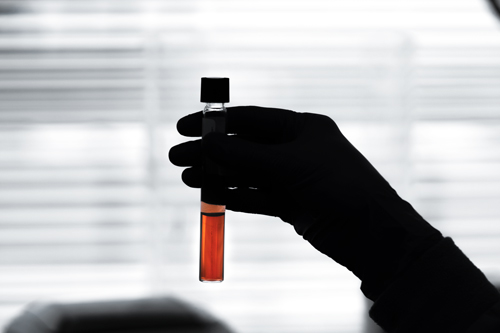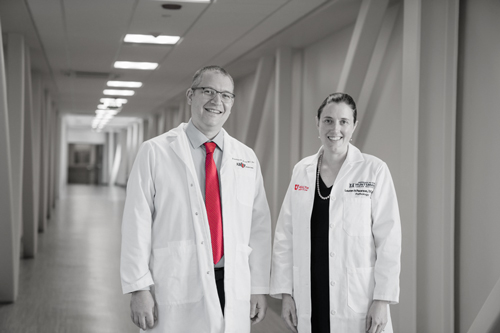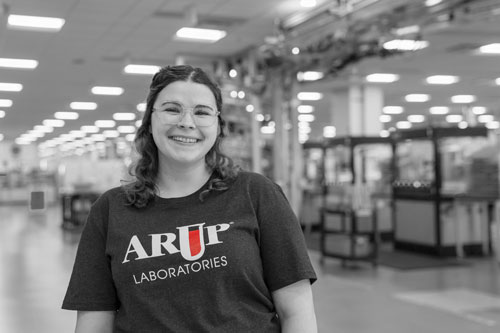ARUP Provides (Free) Education Worldwide

Diagnostic testing isn’t the only service ARUP provides worldwide; for the last three years, it has built a growing educational resource specifically designed for students in the medical laboratory sciences. It’s free, quickly digested by the brain (short and simple), and uses technology accessible on any visual platform.
Faculty and students in medical laboratory science (MLS) programs are using ARUP’s MLS Student Resource Center, which is a segment of ARUP’s Institute for Learning (IFL). More than half of the site’s visits last year came from an international audience. Unlike other educational outreach through IFL, this center is designed primarily for beginners, focusing on the basics.
“What we are trying to offer is best practices in teaching by offering a vetted resource for academics,” says Karen McRae, MS, MT(ASCP), who oversees the site’s content. It is organized into the same six categories found in most hospital labs: hematology, blood bank, microbiology, chemistry, molecular diagnostics, and management. Knowledge sharing and supporting education is part of ARUP’s modus operandi.
The online center includes a series of short (three to six minute) how-to videos showing a variety of procedures, such as how to perform an Acetest, make a blood smear, or what a bone marrow biopsy entails. Although demonstrations may be done in class, the video provides an unobstructed view of the procedure. “Everyone gets a front-row seat,” quips McRae, pointing out that all ARUP produced videos meet high standards of accuracy, standing out from other videos on the internet dealing with these topics.
An international audience interested in medical laboratory science made up more than half of this educational site’s visits last year.
University of Utah Department of Pathology Professor Karen Brown, MS, MLS (ASCP), regularly uses the bone marrow video in her clinical hematology laboratory class, since it is not something easily accessible to demonstrate. “In the past, I’ve shown some photos in PowerPoint presentations, but it doesn’t capture the procedure as well.”
She advises her students to view the “how-to” videos in between labs or prior to a test. “These videos are short, right-to-the-point, quick refreshers on technique for students,” says Brown, whose feedback has been instrumental in helping ARUP create useful videos.
“There was a blood bank lecture I wasn’t quite sure I understood during the real-time lecture, so I went back and listened to the parts that were unclear and also to the parts that reiterated the things that I didn’t catch in class,” says Sue Cummings, an MLS student and a senior technologist in the Cellular and Innate Immunology Lab. ”It’s great to have this as a second resource.”
The site also provides more in-depth topics—video lectures presented by experts on topics ranging from the role of the clinical laboratory in pain management to the history of syphilis, invention of penicillin, and research on vulnerable populations; the topics include laboratory tests and clinical algorithms for diagnosing.
Professors might assign these videos as homework or extra credit to reinforce what they are teaching in class and/or to enrich their students’ learning experiences. Some videos provide an exciting trajectory of what newcomers to the field can look forward to learning and doing with their MLS degree.
We have so much knowledge here at ARUP to share; we want to make this wealth of information available to benefit people in the field. And yes, if some learn about us through this resource, and end up seeking jobs here, then we like that too.
Karen McRae, MS, MT(ASCP) Education Coordinator, IFL
“We collaborate with faculty to create the content they need, often targeting what students have a hard time grasping or remembering,” says McRae, who has a master’s degree in biomedical laboratory science with an emphasis in instructional technology. The site provides material ideal for a flipped classroom experience, where the students will watch a video and then go to class more prepared to discuss and/or participate in a related activity.
“[MLS] programs are always looking for inexpensive and quality ways to enhance education,” says MLS Professor Brown. “And this online resource fits that criteria.”
Many of the longer videos involve ARUP’s own medical directors, all faculty in the University of Utah’s Department of Pathology. Other experienced professionals provide insight into areas such as finance, human resources, and customer service in the center’s management and professionalism video series. “It’s about teaching students how to be the leaders of tomorrow in this field,” adds McRae.

Keeping the perspective of the student and teachers in mind, material is designed to meet multiple learning styles, so varied visual and auditory elements are incorporated, including the use of different voices, colorful animation, and graphics.
MLS student Jeff Clifford agrees. “I had my professor’s version of how to do a blood smear but it’s nice to see other professionals doing it and explaining how they do it and why it works.” Clifford is a technologist in ARUP’s Microbial Amplified Detection Lab.
“In creating our content, we are focused on how people learn best. What can we do to help this learning curve? What can we do to help students retain info? Recall it? Find it?” says McRae. “All this, plus keeping people up-to-date in a fast-moving field.”
Advancing Education
with ARUP’s Tuition Reimbursement Program
Terms such as return-on-investment, portfolio, appreciation, and equity are all associated with investments of one sort or another—stocks, bonds, CDs. Things. For more than 20 years, ARUP has invested in people, speculating that the payoff, both personally for the individual and for the company, is worth it.
Through the tuition reimbursement program, ARUP has contributed millions of dollars to the education of employees and their family members. Over the last four years, more than 500 people have taken advantage of this benefit annually.
“The amount of tuition reimbursement has f uctuated over the years as the number of employees has increased and changes have been made to the benefit” says James McVey, supervisor of Education. “Last year, we provided more than $930,000; this amount has been fairly consistent.” Employees can be reimbursed up to $2,000/year, or a lifetime total of $8,000 for classes.
One hundred percent reimbursement is provided for those employees pursuing medical laboratory science (MLS) or medical laboratory technician (MLT) degrees. Qualifying participants must have worked at ARUP for six months and agree to stay for at least two years once they have completed the degree (or pay back the cost of the tuition).
“I have to admit, it was an amazing feeling to graduate from college debt free,” says Ashley Morris, a medical technologist in the Genomics Lab who graduated this spring from the University of Utah’s MLS program. “For the most part, I think people here really want to see you be successful and get more education.”

“It’s a strong incentive,” adds EleriPaul, who took advantage of the tuition program to complete her MLS degree this spring at the University of Utah as well. She advises participants to be aware of at what point tuition reimbursement is taxed by the government. “I’ll definitely be going back for more education eventually and when I do, I’ll be using ARUP’s tuition reimbursement program,” adds Paul.
“Investing in the education of our employees creates an atmosphere where employees want to continue to learn and grow,” says McVey. “Plus, it plays into our mission to continually improve patient care; we know that an educated workforce improves processes and the work being done on behalf of patients.” Employees outside the labs are also taking advantage of the tuition reimbursement. Hollie Banks, an education event coordinator and a single mother, is earning her bachelor’s degree. “They really walk the talk here; education is part of the mission, and I’m just one example of that mission in action.”

















 HOME
HOME